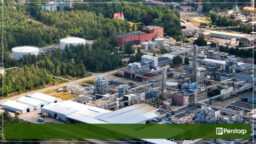What is demand collaboration?
Demand collaboration is a process where multiple stakeholders come together to provide input into the forecasting process. This can include sales teams, marketing teams, customers, and suppliers – even finance and operations. By gathering information from all relevant parties, you can create a more comprehensive forecast that considers a broader range of factors and provides a clearer picture of future demand.
Statistical forecasting + demand collaboration = collaborative demand planning
Most manufacturing and distribution companies start their demand planning process by generating a statistical forecast based on historical sales. If demand is relatively stable, and precise projections aren’t critical to business performance, a statistical forecast may be enough.
However, the issue with statistical forecasting is that it is based on historical data and doesn’t consider information about future demand – information your colleagues, suppliers and customers already have – such as planned promotions or events, competitive intelligence, or perhaps a known supplier issue.
Demand collaboration complements your statistical forecasting with a structured process for capturing and leveraging market intelligence and business information. It is a powerful addition that significantly enhances your overall forecast accuracy and it is relevant for businesses of all sizes in all industries. For example, companies with frequent product introductions and discontinuations, or those using demand-shaping strategies such as sales promotions and discounts, will benefit significantly from collaboration.
What capabilities should you look for in a collaborative demand planning solution?
Capturing demand information from multiple stakeholders is time-consuming and requires good system support. A collaborative demand planning solution enables real-time data sharing across a common set of forecasting data. This helps streamline the capture, review, and approval of all stakeholder input while ensuring data integrity.
There are several things you need to consider when selecting and implementing a collaborative demand planning solution. This list isn’t exhaustive, but it’s a good starting point.
1. With so many contributors, it is vital that the user interface is intuitive and can be configured for individual roles and users. You should also be able to securely deploy the solution both internally and externally.
2. Making forecast adjustments and comments should be easy, whether for an individual item or at a product group level. For example, an adjustment for a product category should automatically filter down to the individual items.
3. The system should have strong workflow capabilities with configurable roles and responsibilities to ensure the planning process is followed, required signoffs are provided, and timelines are met.
4. Transparency is important – any system under consideration should have a built-in audit trail that documents every adjustment, including annotations and timestamps.
5. It is vital that all stakeholders clearly understand what is expected from them in terms of timing and input. Take your time to implement processes and procedures that encourage collaboration and foster a culture of trust and transparency.
The benefits of collaboration go beyond a better forecast
Effective demand collaboration doesn’t just deliver improved forecast accuracy – it improves communication across the company. By working together on forecasting, employees from different departments and levels of the organization can build stronger relationships. This fosters better teamwork and develops a shared understanding of the company’s goals and objectives.
Demand collaboration also helps to improve decision-making. By involving multiple stakeholders in the forecasting process, you gain a more holistic view of the future. This can help to drive innovation, reduce costs, and improve overall business performance.
While these benefits may be hard to quantify in terms of value, they are highly significant to your company’s success. For example, improved communication and business decision-making are invaluable to your sales and operations planning (S&OP). S&OP is a cross-functional process that brings together representatives from different departments to align and balance supply and demand. Here, a collaborative process will aid the understanding of demand and lead to improved forecast accuracy and, therefore, a better S&OP outcome.
If you’d like to learn more about demand collaboration and what it would mean for your business, get in touch.
Get all the latest industry trends, updates & news from Optimity
















